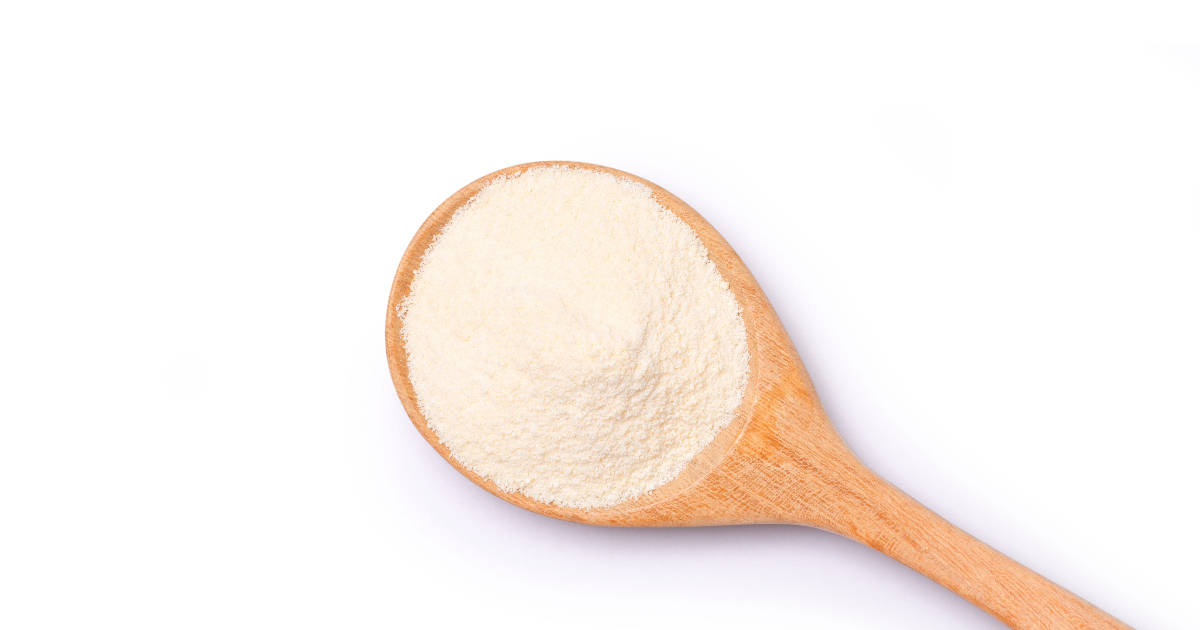Agar powder is a versatile ingredient used as a vegetarian alternative to gelatin in cooking and baking. It is a natural gelling agent derived from red seaweed that sets custards, aspics, puddings, and more.

Agar is a gelatinous substance extracted from red algae or seaweed. It consists of a mixture of agarose and agaropectin polysaccharides.
Agar Powder vs. Agar Strips/Flakes
Agar comes in several forms:
- Powder - Fine, smooth, yellowish powder that dissolves rapidly in water. Easy to measure out.
- Flakes/threads - Translucent white, sold dried in bundles. Rehydrate in water before use.
- Strips - Colorless dried rods that require soaking then simmering to dissolve.
Powdered agar dissolves fastest, while threads and strips need extra preparation. Powder is the simplest DIY option.
Making Homemade Agar Powder
With basic kitchen equipment, it's easy to DIY agar powder at home.
Equipment
- Blender, food processor, or coffee grinder
- Fine mesh sieve or flour sifter
- Mixing bowls
- Baking sheets
- Oven or food dehydrator

Agar Powder Recipe
Ingredients
- Dried, raw seaweed - look for Gracilaria or Gelidium species
- Water
- Salt (optional)
- Cheesecloth
- Kitchen twine
Instructions
- Rinse seaweed then soak in water for 1-2 hours until fully rehydrated
- Drain then transfer to a blender/food processor, add small amount of water to help it blend
- Blend to a smooth purée, adding water as needed
- Pass purée through a fine mesh sieve lined with cheesecloth
- Gather the corners of the cheesecloth then twist over a bowl to squeeze out excess liquid
- Transfer agar gel onto baking sheets in a thin layer
- Dehydrate at 145°F until completely dried out, 6-12 hours
- Crumble dried flakes then grind to a fine powder using a blender or spice grinder
- Sift powder through a fine mesh flour sifter to remove clumps
- Store agar powder in an airtight container
Key Takeaway: Make agar powder using dried seaweed, a blender or coffee grinder, sifter, and oven or dehydrator for drying.
Tips for Making Agar Powder
Making great agar powder relies on some key tips:
- Use high-quality seaweed - raw and unprocessed Gracilaria or Gelidium species work best
- Blend well - break down seaweed fibers completely so the powder dissolves readily
- Dry thoroughly - moisture makes powder clump, ensure it's fully dehydrated before grinding
- Sift carefully - remove all clumps to maximize gelling properties
- Check ratios - aim for 10g powder per 1 liter liquid when making recipes
With practice, you can perfect the DIY process and produce professional-quality agar powder.
Using Homemade Agar Powder
The best part is - DIY agar powder works just like commercial products. A few tips:
- Soak first - for ropes/strips, soak in cold water for 1 hour before use
- Slowly heat - prevent clumping by mixing powder with sugar/liquid, heating gradually
- Boil briefly - just 1-2 minutes to hydrate agar and activate gelling agents
- Cool properly - pour liquid gel into molds, chill completely before unmolding
DIY agar powder shines in no-bake desserts like mousses, chiffon cakes, fruit jellies, and more.
It can also be used to make vegan aspics, terrines, gravies and other savory dishes that benefit from its heat-stable gelling magic.
Storing Agar Powder
Like any dry ingredient, homemade agar powder keeps best in an airtight container in a cool, dark place. Optimal storage temperature is below 68°F.
If stored properly, agar powder stays fresh for up to 1 year. Over time, it may begin to clump again due to moisture absorption. Simply regrind clumps using a blender or spice grinder before use.
For longer shelf life, store agar powder in the freezer. It will keep for 2+ years frozen. Thaw completely at room temperature before use.
Key Takeaway: Keep agar powder in an airtight container in the pantry or freezer for 1-2 years of freshness.
FAQs
Can I flavor my agar powder?
Yes! You can blend dried fruits, spices, herbs, matcha, coffee, etc. into your seaweed purée before dehydrating. Vanilla beans infuse wonderful flavor.
What dishes can I make with DIY agar powder?
Homemade agar is endlessly versatile. Use it for jellies, ice creams, mousses, custards, vegan aspics, glazes, fillings, frostings, and more.
Is agar better than gelatin?
Agar has many advantages over animal-based gelatin. As a plant ingredient, it's vegetarian/vegan-friendly. It also sets firmer at higher temperatures, ideal for no-bake recipes.
Why does my agar not set properly?
Under-heating prevents agar chains from cross-linking correctly. Overheating degrades gelling agents. Test powder quality and carefully follow package instructions.
Can I reuse leftover agar gel?
Unfortunately, agar only solidifies properly once. Remelting used gel results in weaker, imperfect textures. Always make fresh agar.
Conclusion
From seaweed to pantry, making DIY agar powder is simple with basic kitchen tools. Homemade agar works beautifully in baking, cooking, and desserts for its impressive gelling magic.
With the proper technique, reusable homemade agar powder rivals store-bought products, providing a cost-effective vegetarian alternative to gelatin.

